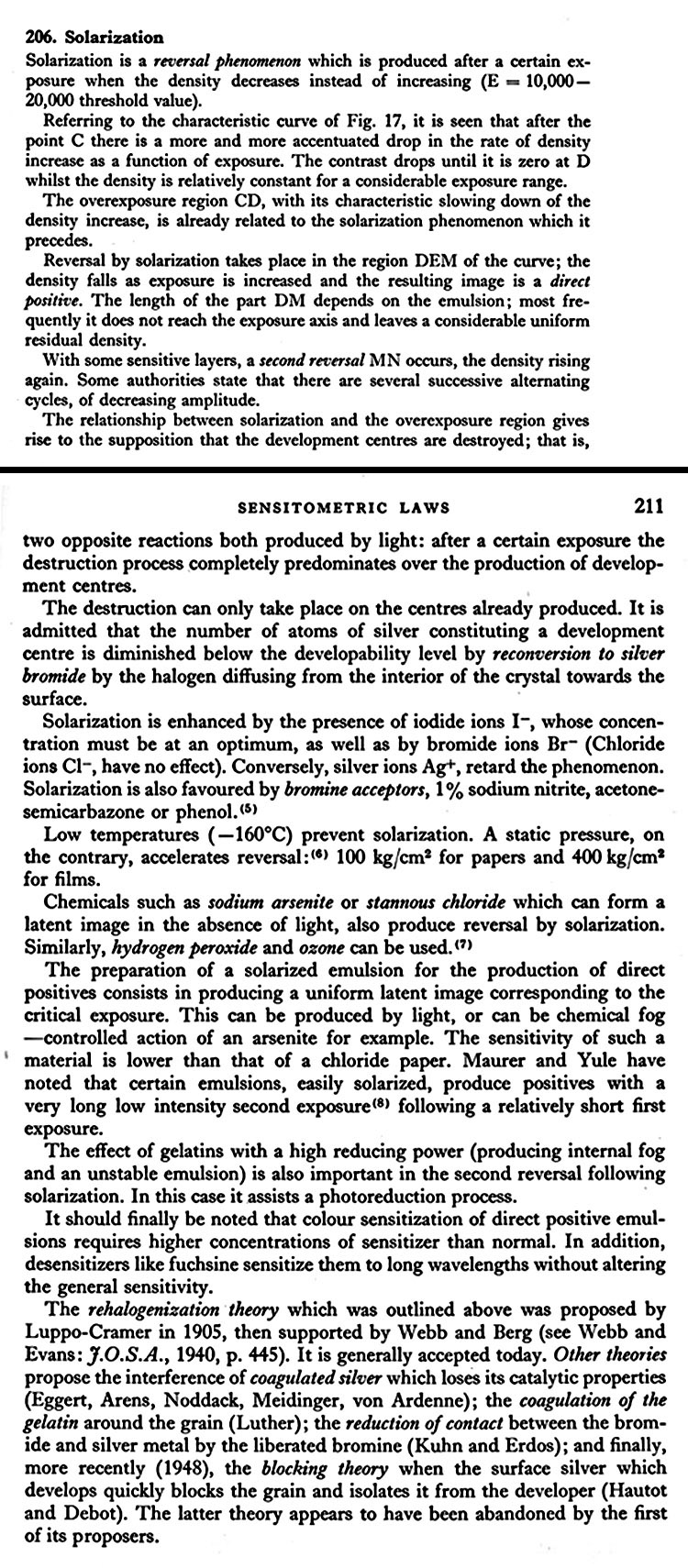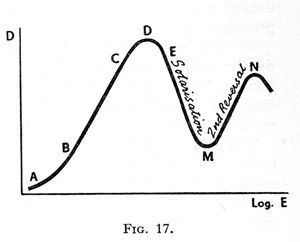Overexposure and Solarization
December 06, 2011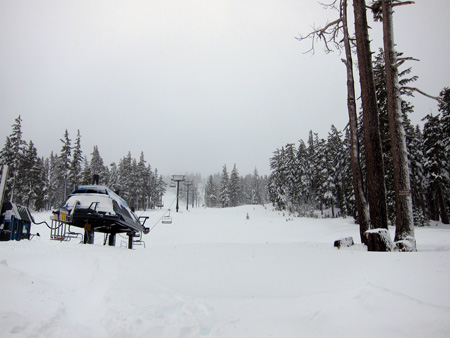
I can't be certain there was more UV light at 4200 ft than at sea level at Thanksgiving, but there is no doubt that UV reflecting off snow at 6300 ft, even on a very overcast day, is a force to be reckoned with — and I didn't.
Mt Bachelor Ski Resort wasn't open yet to skiers, but it was possible to hike around on the snowmobile tracks. It was wonderful to have the place basically to ourselves. When the lifts start up, Mt Bachelor is as busy as a small city. Unfortunately, solarization ruined the day's photography except as a 'learning experience'. Fortunately, Spouse and Dog weren't along to take pictures. I'll blame the ecstatic Sheltie racing around my tripod for my not stopping down the lens before exposure.
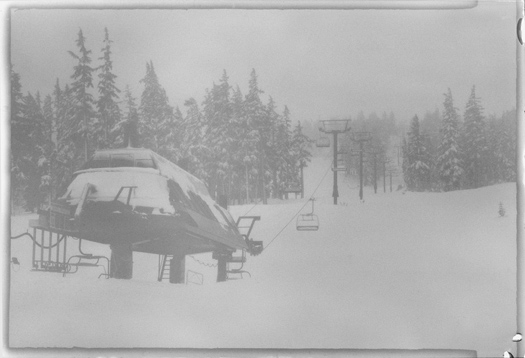
Left: Baby Graphic negative. f/4.5, 10 sec.
The overexposure blasted the negative into a perfect solarization. This is a straight scan of the film. It hasn't been inverted.
I managed to stop down to f/16 on the next shot. I had plenty of film along, and I had planned on doing a full set of exposure brackets, but by this time the snow was blowing straight into the lens and onto the open darkslide, so I called it a day as far as photography was concerned and took my dog's excellent advice on what to do in the snow. A great time was had by all.
As it turned out, 10 sec at f/16 was still way too much exposure.
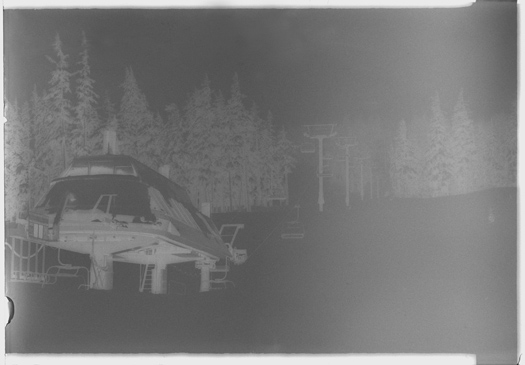
There are a couple of interesting things going on with this negative. There's almost certainly a bit of halation, but primarily it's irradiation and the bottom of a solarization curve. Unlike with the negative that flipped completely to positive, most solarization problems are subtle and not uniform across a negative. Unsurprisingly, the issue starts in areas of greatest exposure, and in what can seem like a paradox, the effect is a lessening of density along with degradation of detail.
Below left: crop of solarized positive. Below right: crop of overexposed negative, inverted. Except for the inversion of the negative, both images were treated identically — a straight scan followed by Photoshop's 'Auto Contrast' function.
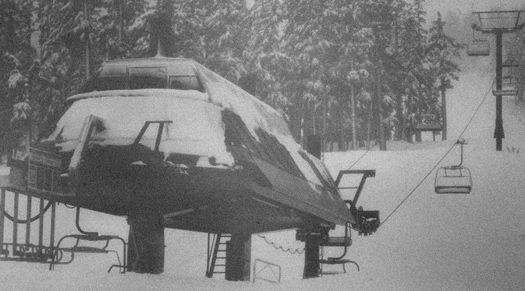
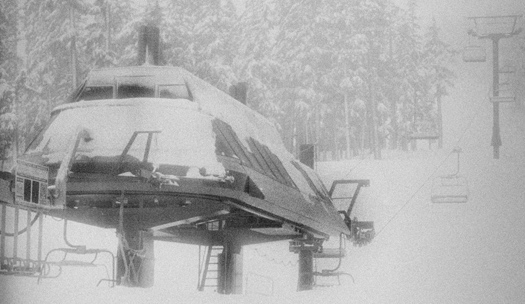
The whole thing is fascinating. In the negative, the underside of the chairlift engine wasn't overexposed, so the details are mostly there, obscured only by the spillover irradiation off the snow. The chairs and the poles are low contrast (more so than in the solarized image, but it's hard to tell how much of that is irradiation and how much is an accurate representation of the weather and visibility. Although the solarized image has what could be considered better density, there is no detail in the shadowed area under the engine.
Back in April, when I was trying to get more speed out of my emulsion, I added extra KI to a batch. The result was the ugliest stuff imaginable, so I cut it up to test a half dozen Kodak Pony 828 cameras for focus (a problem with cleaned-up Ponies.) The first day, I went out and shot exposure brackets. Beyond ½ sec at f/4, I couldn't get enough density in the shadows without the emulsion starting to solarize. The next day, I went out and bracketed again, this time going for the solarization.
It may be that extra KI is part of the solution to deliberating making a positive emulsion. Yes or no, I don't know if it was the reason this emulsion was so ugly. Alas, questions for another day.
Below top: ½ sec, f/22 through f/4, and bottom: f/16, 3 sec through 24 sec, in 3 sec increments.


Below: Between 3 sec and 6 sec, you can see the image start to flip. It had already started losing density and definition.
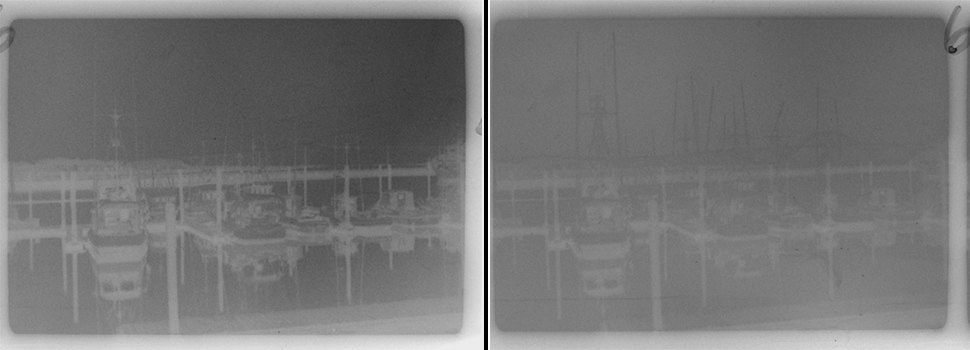
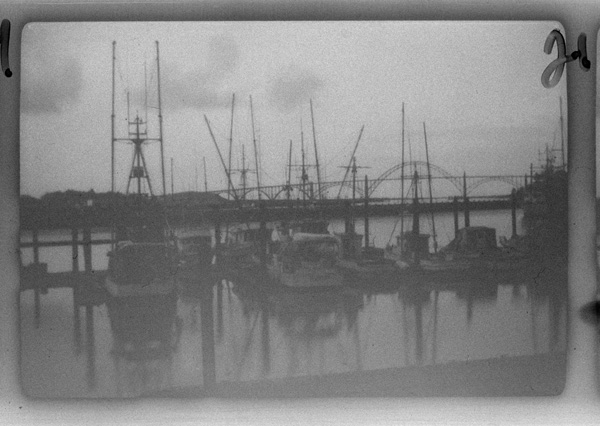
At 21 sec, it was a reasonable positive, even with no Photoshop work. (It's not in focus, so not worth the bother.)
By the time the 1960 edition of the Focal Encyclopedia of Photography was published, "solarization" as a technical problem was pretty much solved. The entry for the word notes it and then dismisses it and moves right on to describe a darkroom trick, popular at the time, which is technically the Sabattier Effect, but often misnamed Solarization.
Pierre Glafkides took a stab at real solarization in his 1958 text, Photographic Chemistry, Vol. One. I don't know where the current theory/facts on the phenomenon stand.
